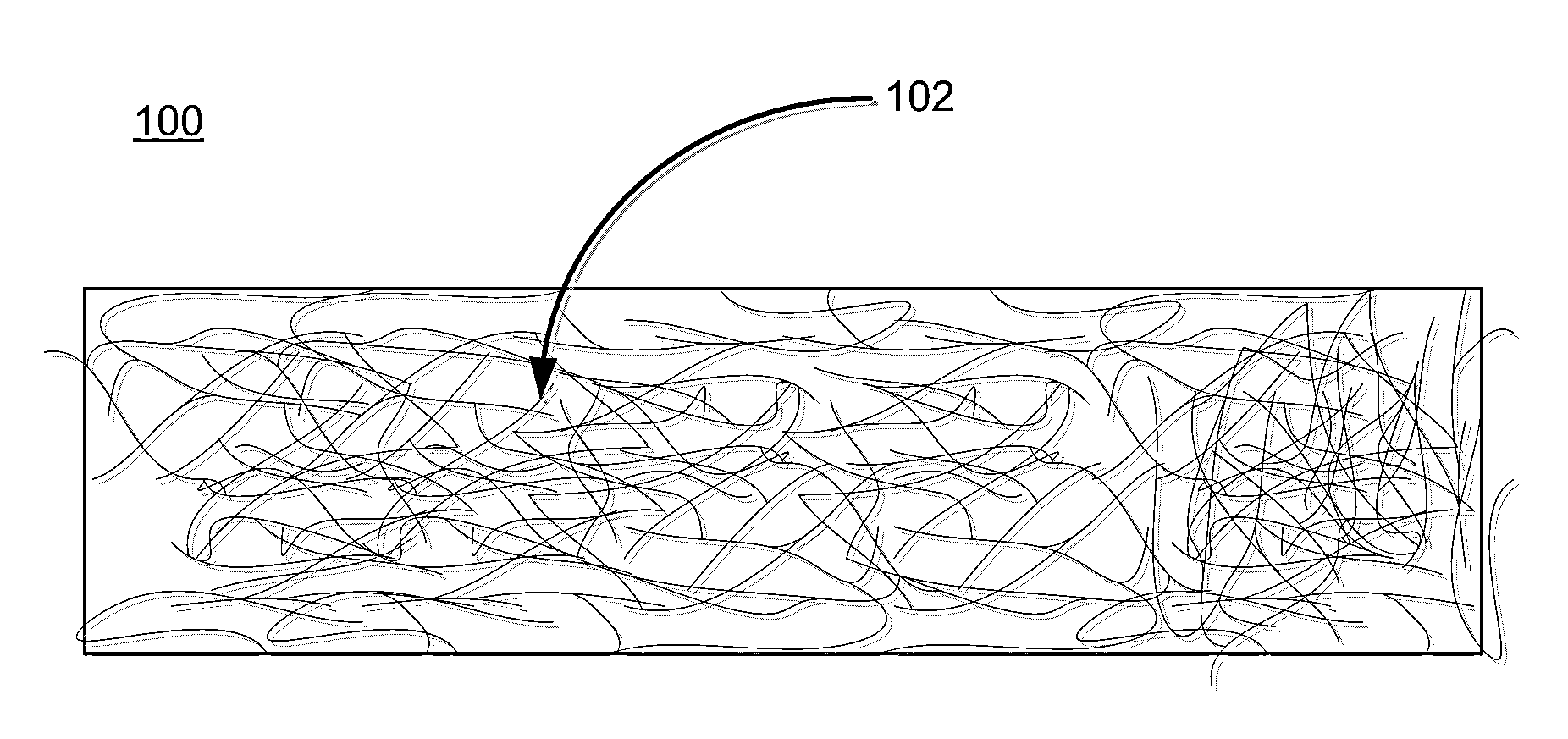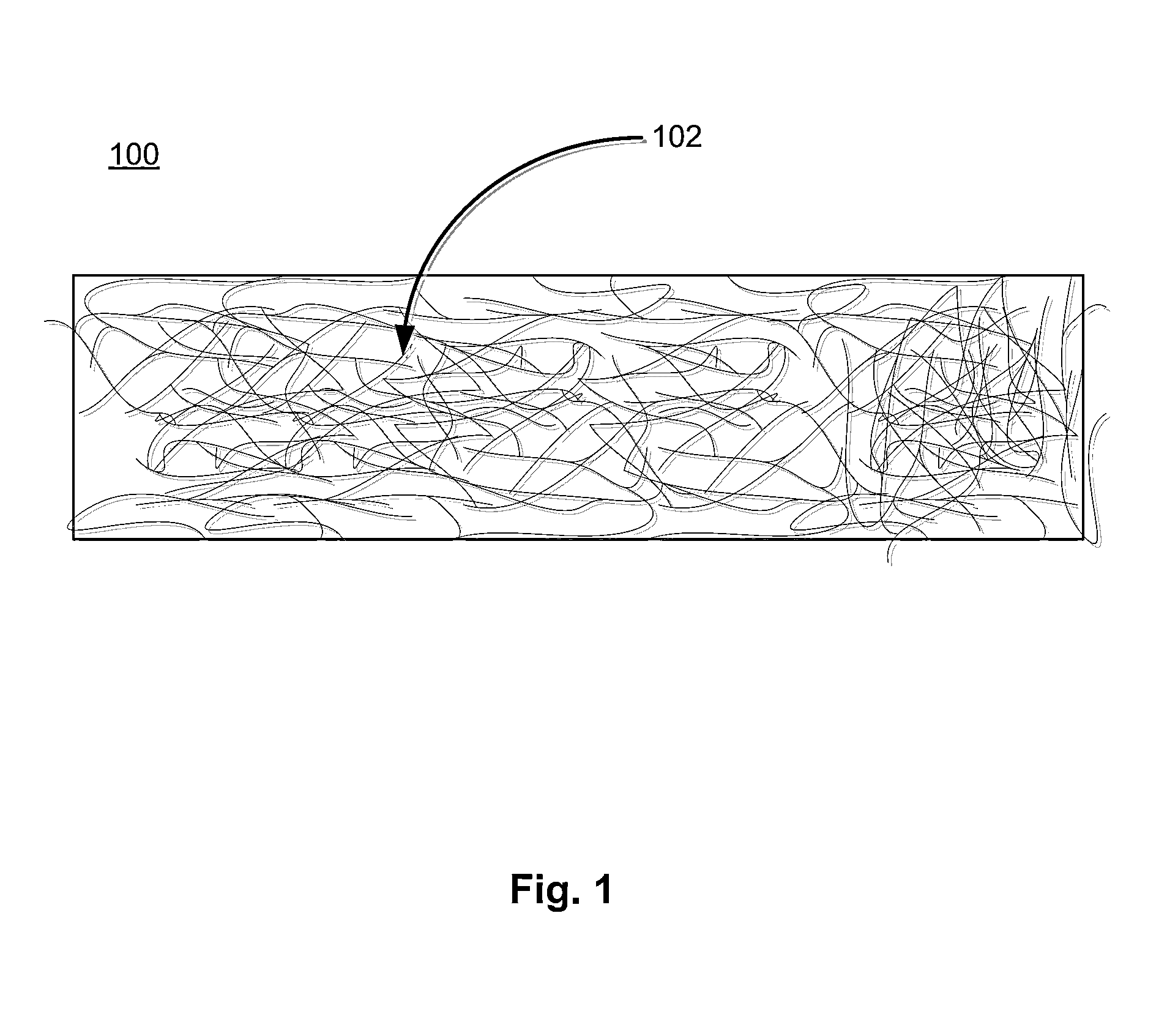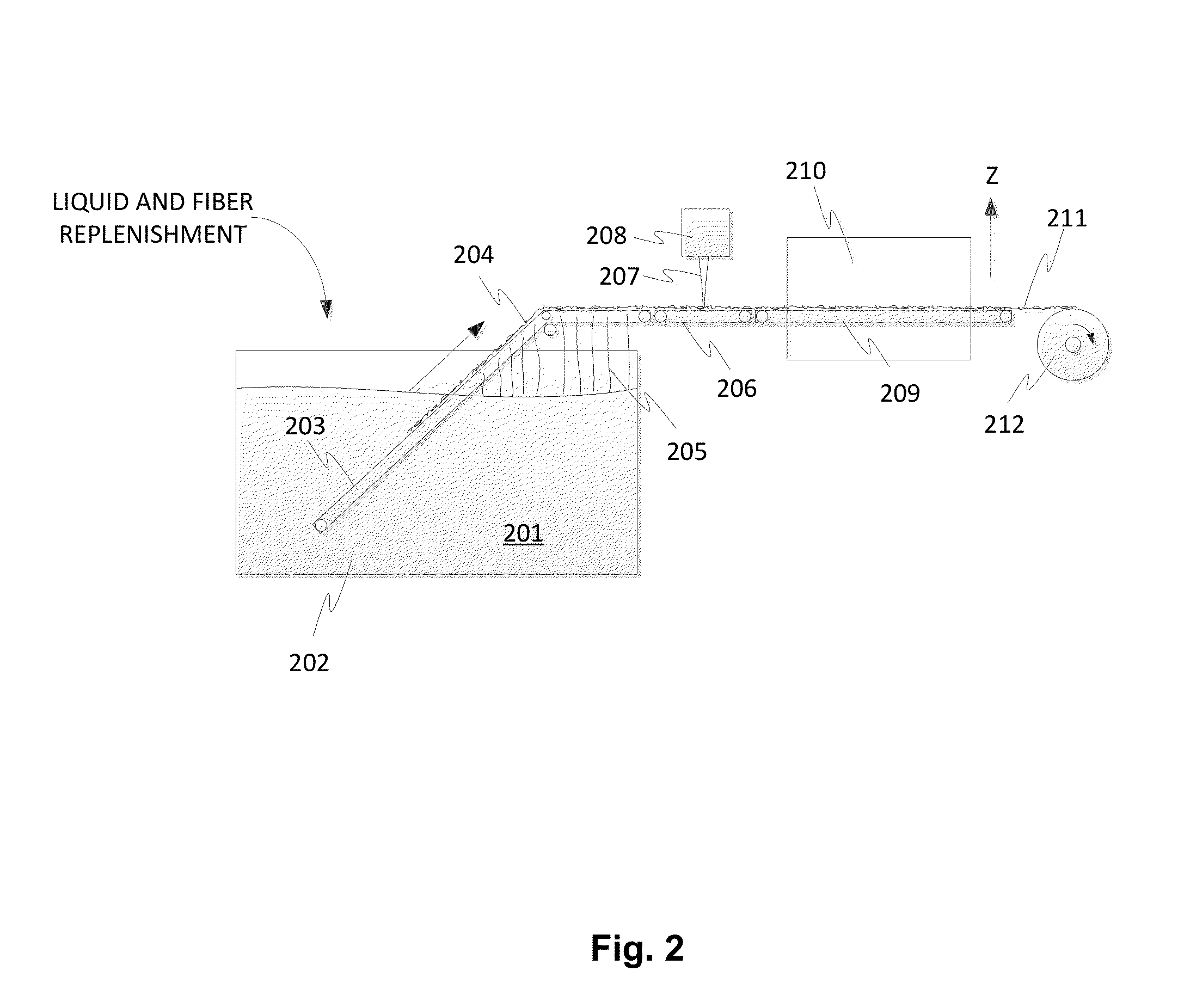Viscosity modified formaldehyde-free binder compositions
- Summary
- Abstract
- Description
- Claims
- Application Information
AI Technical Summary
Benefits of technology
Problems solved by technology
Method used
Image
Examples
example 1
[0089]Glass mats (targeted 1.9-2.3 lb / sq, nominal 2.1 lb / sq, targeted 17-23% LOI, nominal 20%) were made with binder compositions of Binder 2 without an added thickening agent, Binder 2 with 0.14 wt. % HEC, and Binder 2 with 0.08 wt. % Xanthan gum, as described above in Table 1. The same curing temperature were used for each glass mat made with the binder compositions.
[0090]The addition of the thickening agents to the binder compositions improved the quality of the glass mats in a number of ways: The reduced migration of the binder composition after its application to the mat resulted in more uniform vertical distribution of the binder between the top and bottom sides of the mat, with no noticeable differences in appearance between the top and bottom sides. The glass mats made with binder compositions having the thickening agents also increased the physical properties like dry tensile strength. These tensile strength measurements are described in Table 2 below:
TABLE 2Tensile Strengt...
example 2
[0093]A second set of glass mats were made using Binder 2. The glass mats (targeted 1.21-1.56 lb / sq, nominal 1.4 lb / sq, targeted 16-22% LOI, nominal 19%) were made with binder compositions of Binder 2 without an added thickening agent, Binder 2 with 0.14 wt. % HEC, and Binder 2 with 0.08 wt. % Xanthan gum. The same curing temperature was used for all the binders.
[0094]The addition of the thickening agents significantly improved the quality of the glass mats. There was no noticeable difference in the appearance for the top and bottom of the mats that included the thickening agents, and the mats were well bonded. Table 3 shows the measurement results for tensile strengths:
TABLE 3Tensile Strengths of Glass Mats (1.4 lb / sq) Made with Binder 2 CompositionsTotal TensileTotal TensileH / WTensileTensileTotal(normalized by 2.1 lb / sq)(normalized by 20% LOI)TensileWeightLOIMDCMDTensileImprovementImprovementMDHot / WetBinder(lb / sq)(%)(lbs / in)(lbs / in)(lbs / in)lbs / inover BINDER 2lbs / inover BINDER 2(lb...
example 3
[0096]A third set of glass mats were made using Binder 1. The glass mats (targeted 1.21-1.56 lb / sq, nominal 1.4 lb / sq, targeted 16-22% LOI, nominal 19%) were made with binder compositions of Binder 1 without an added thickening agent, and Binder 1 with 0.12 wt. % HEC, as discussed in Table 1. Table 4 shows the measurement results for tensile strengths:
TABLE 4Tensile Strengths of Glass Mats (1.4 lb / sq) Made with Binder 1 CompositionsTotal TensileTotal TensileTensileTensileTotal(normalized by 2.1 lb / sq)(normalized by 20% LOI)H / WWeightLOIMDCMDTensileImprovementImprovementTensileHot / WetBinder(lb / sq)(%)(lbs / in)(lbs / in)(lbs / in)lbs / inover Binder 1lbs / inover Binder 1MD(lbs / in)retentionBinder 1 +1.392026.634.160.761.1238%57.7038%17.265%0.12% HECBinder 11.392019.424.744.144.34—41.86—13.972%
[0097]The tensile strength data in Table 4 show that the addition of the HEC thickening agent increased the total tensile strength by roughly 38% compared to the Binder 1 composition with no added thickenin...
PUM
| Property | Measurement | Unit |
|---|---|---|
| Temperature | aaaaa | aaaaa |
| Viscosity | aaaaa | aaaaa |
| Angular velocity | aaaaa | aaaaa |
Abstract
Description
Claims
Application Information
 Login to View More
Login to View More - R&D
- Intellectual Property
- Life Sciences
- Materials
- Tech Scout
- Unparalleled Data Quality
- Higher Quality Content
- 60% Fewer Hallucinations
Browse by: Latest US Patents, China's latest patents, Technical Efficacy Thesaurus, Application Domain, Technology Topic, Popular Technical Reports.
© 2025 PatSnap. All rights reserved.Legal|Privacy policy|Modern Slavery Act Transparency Statement|Sitemap|About US| Contact US: help@patsnap.com



